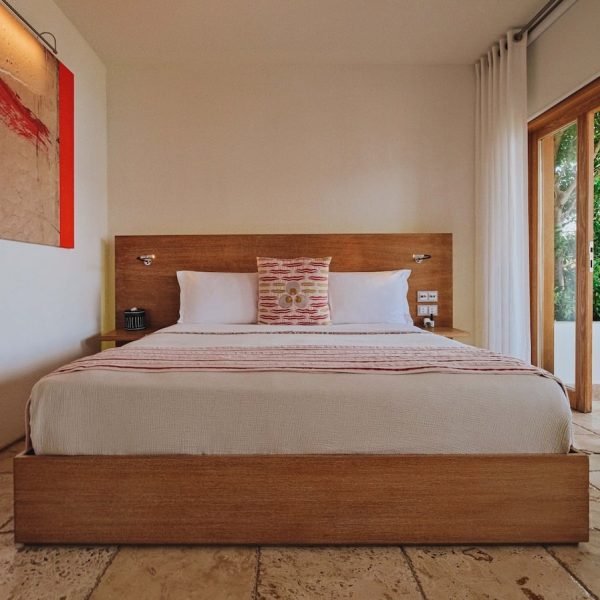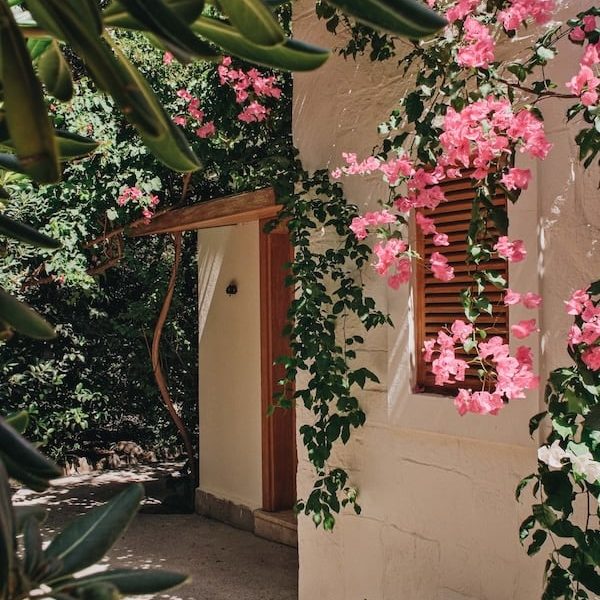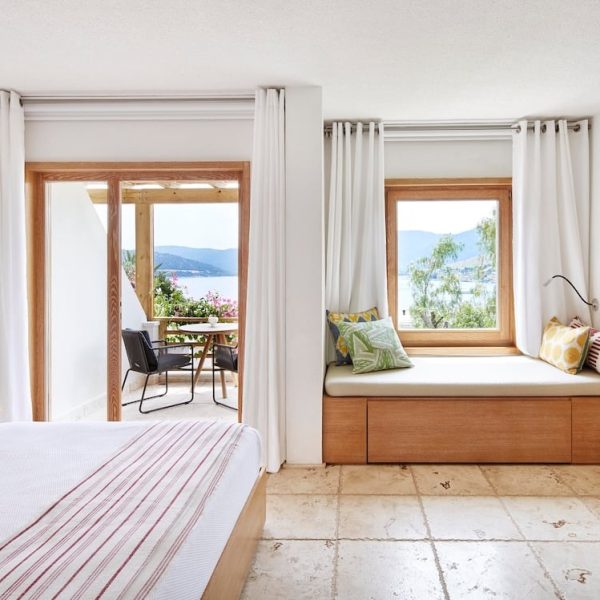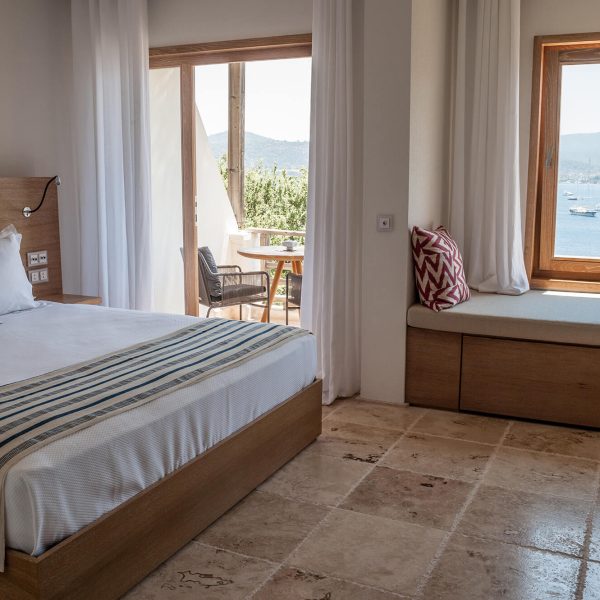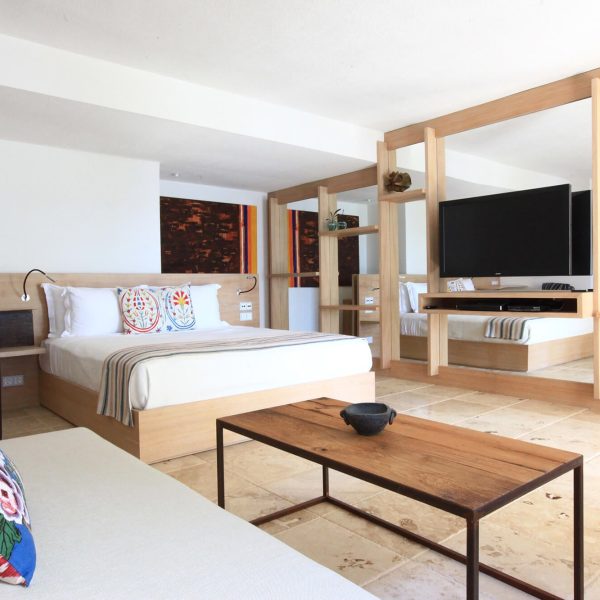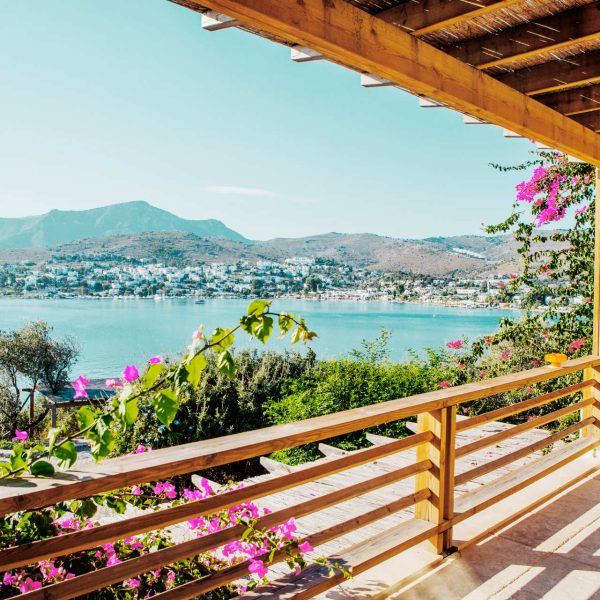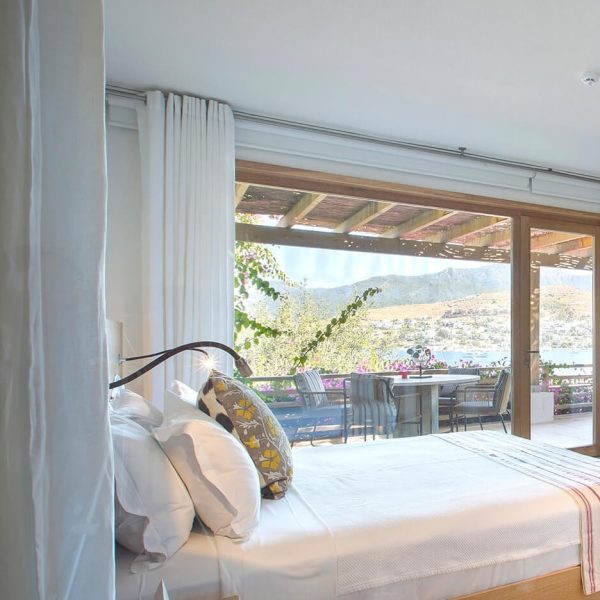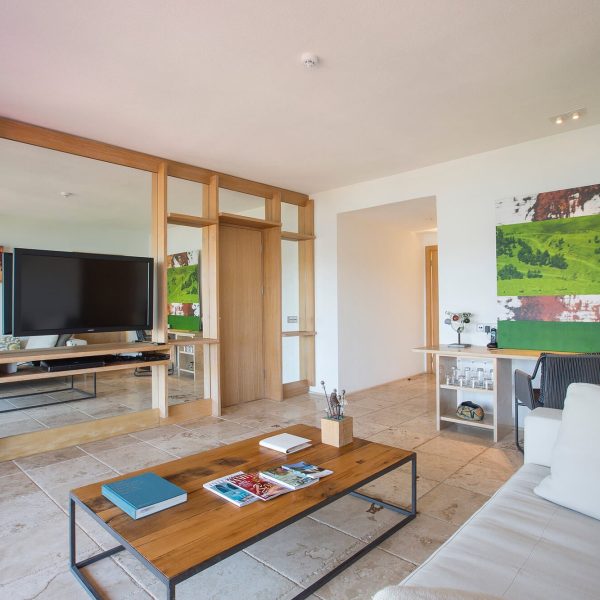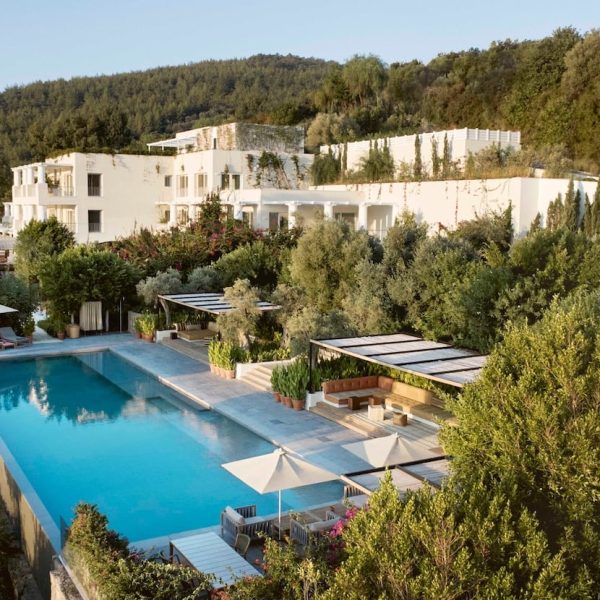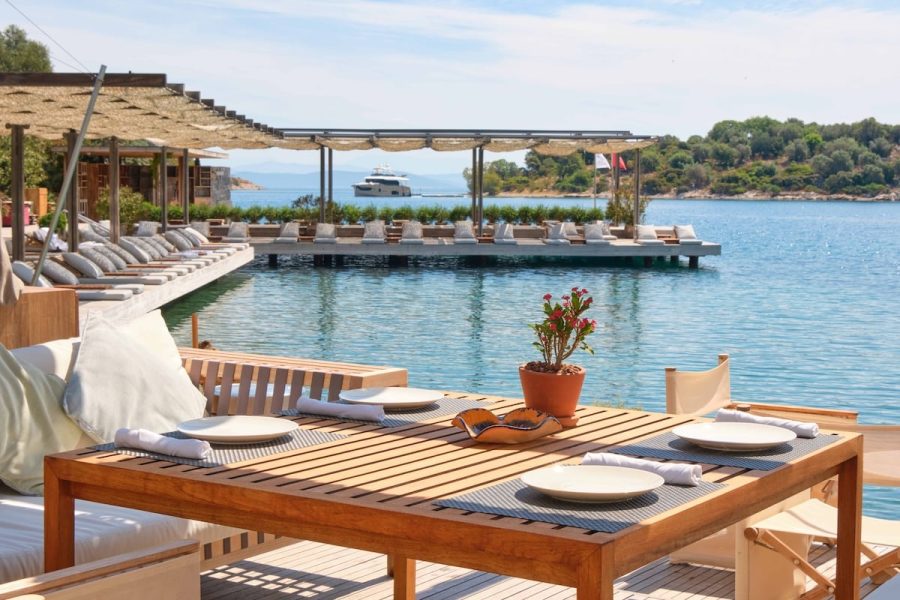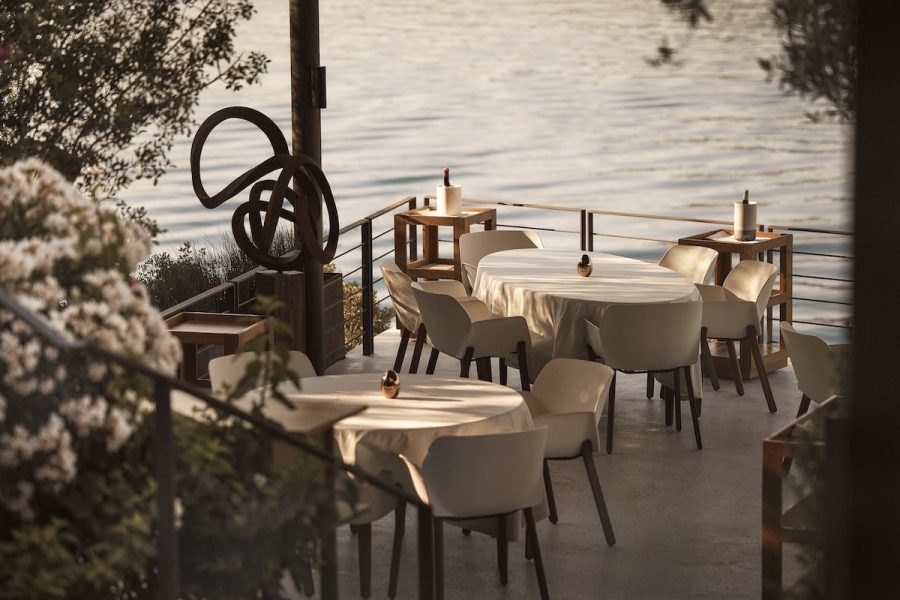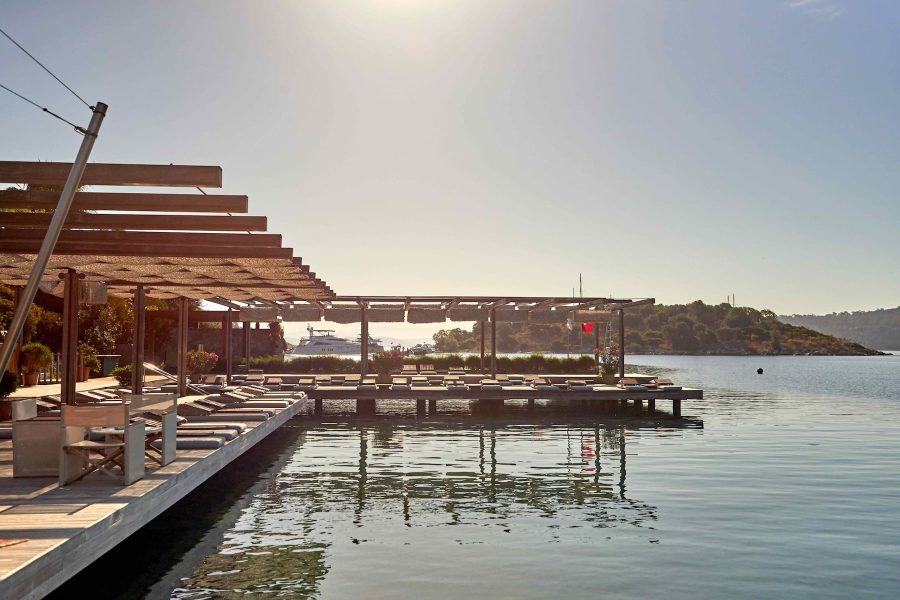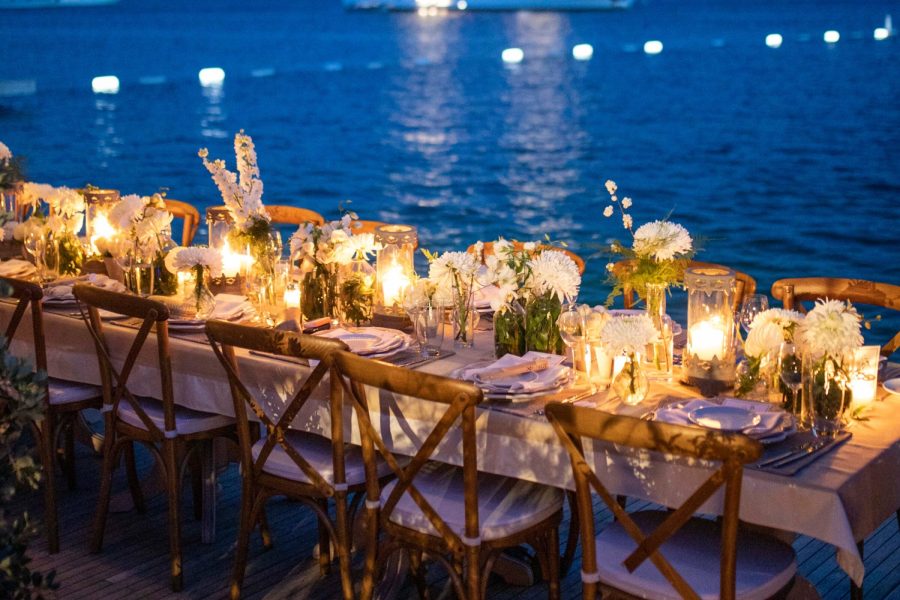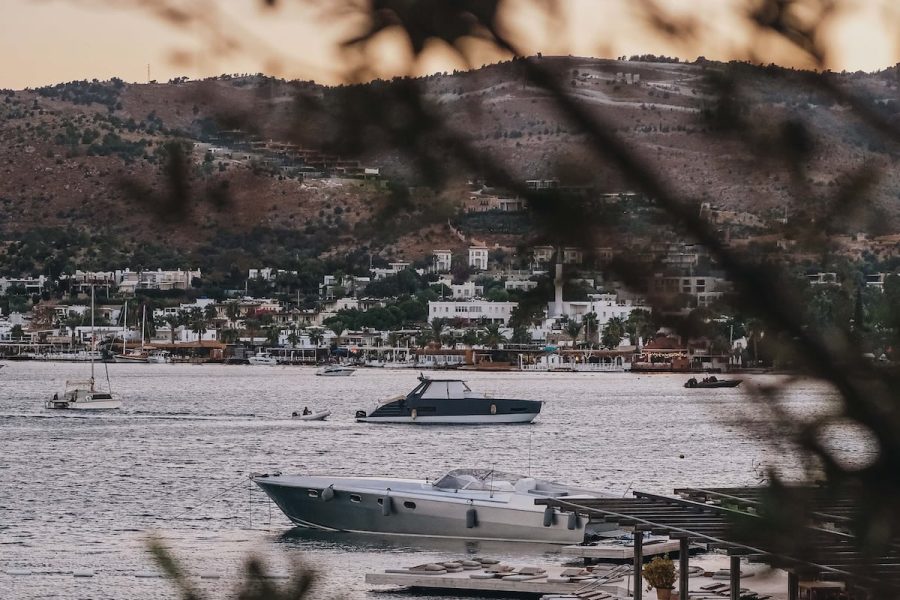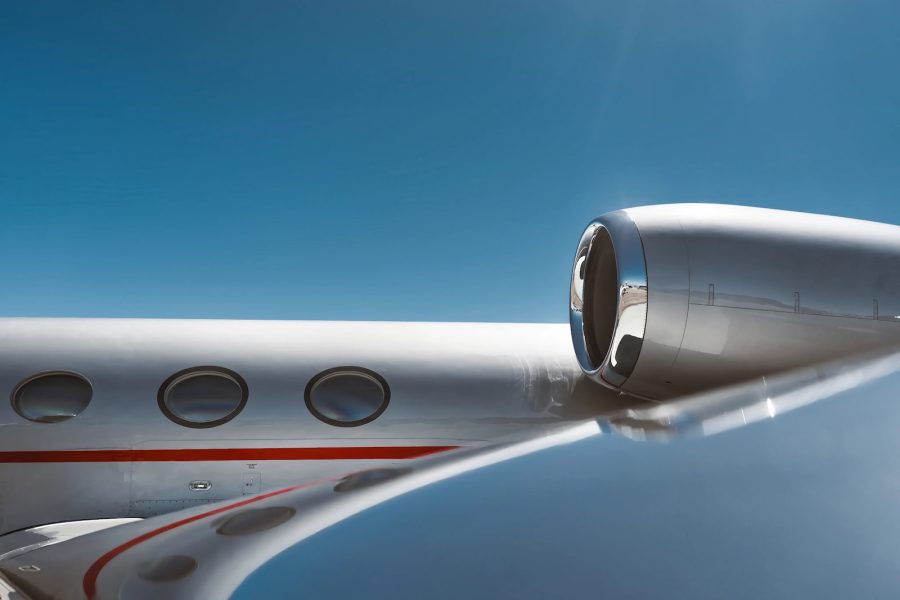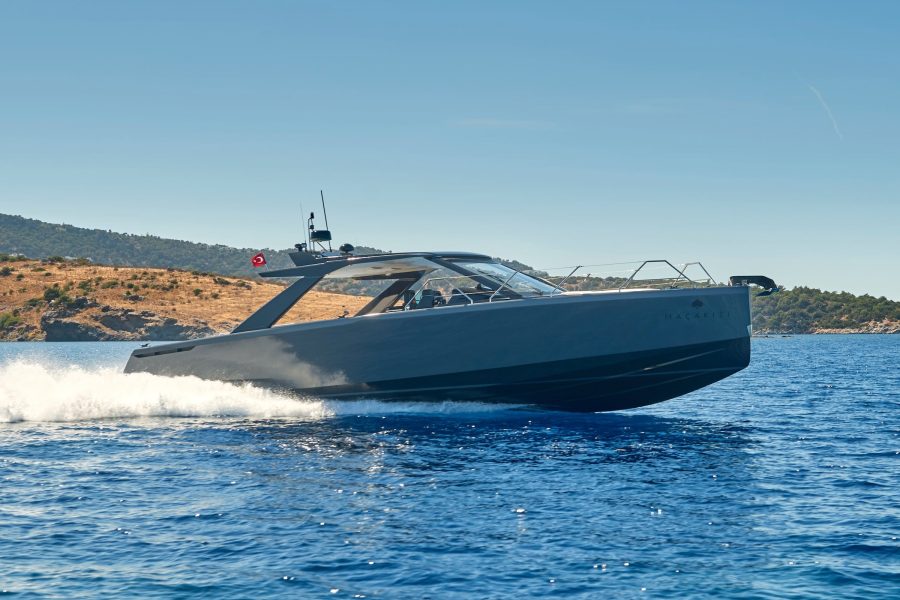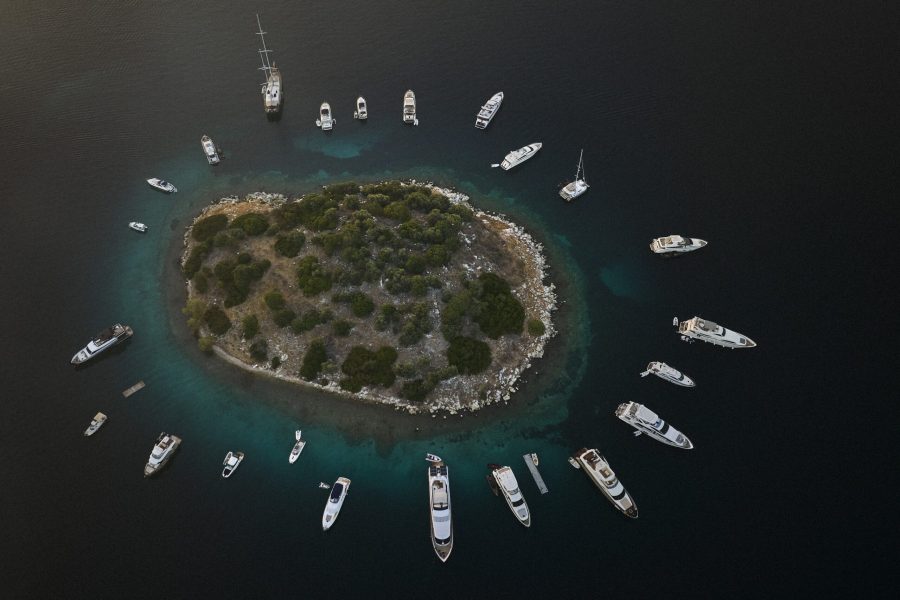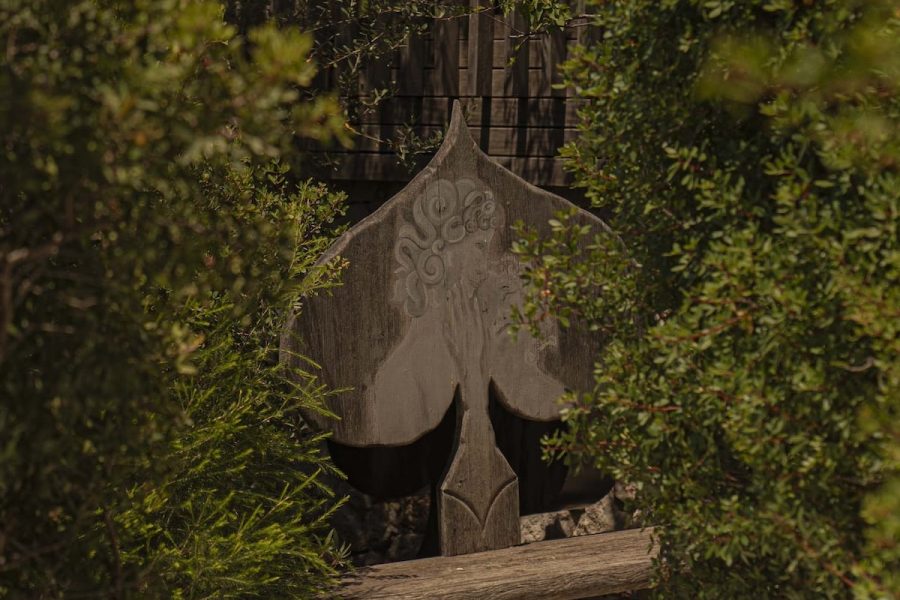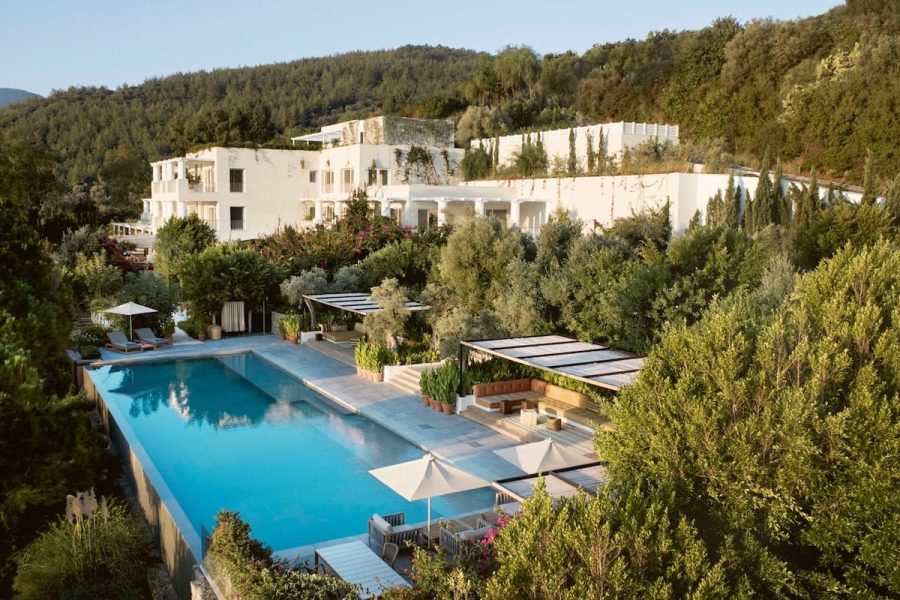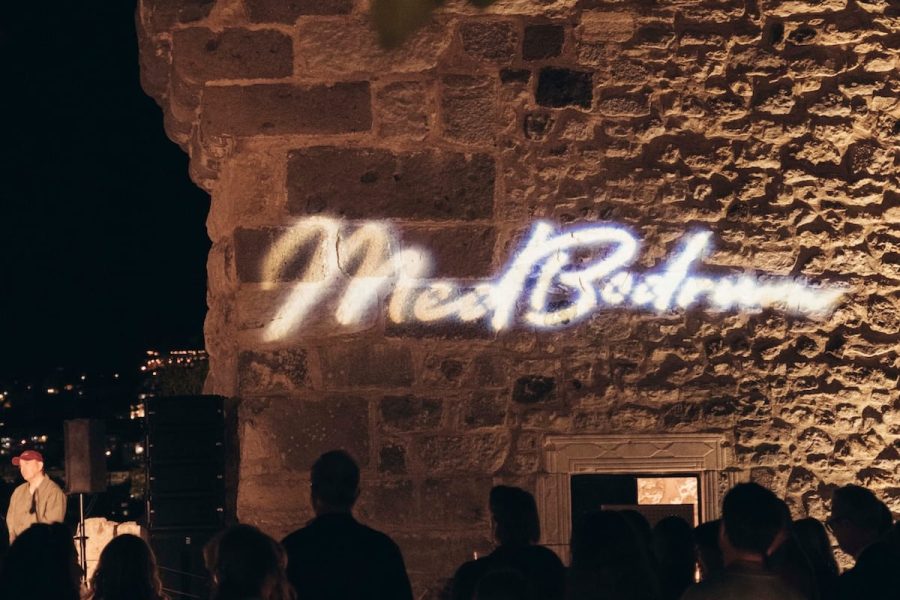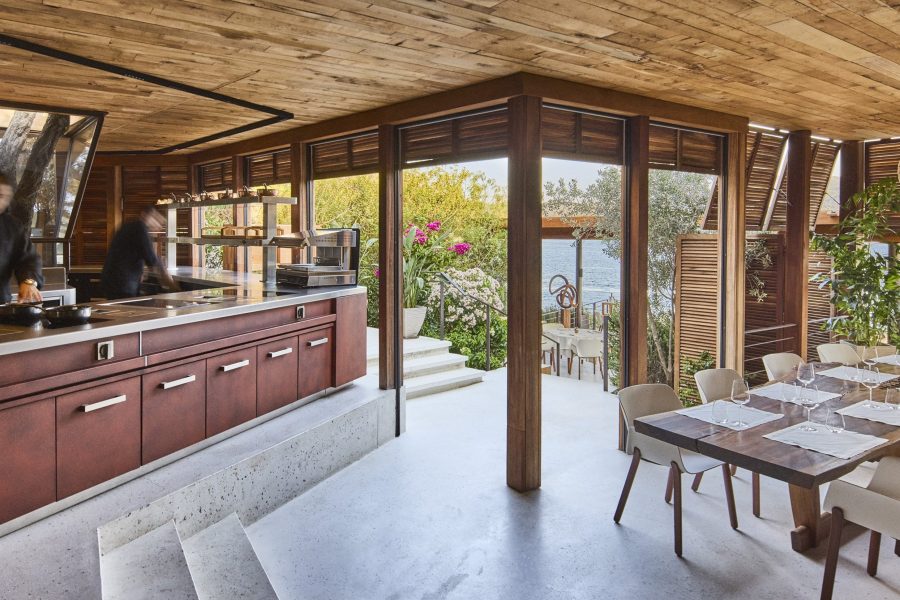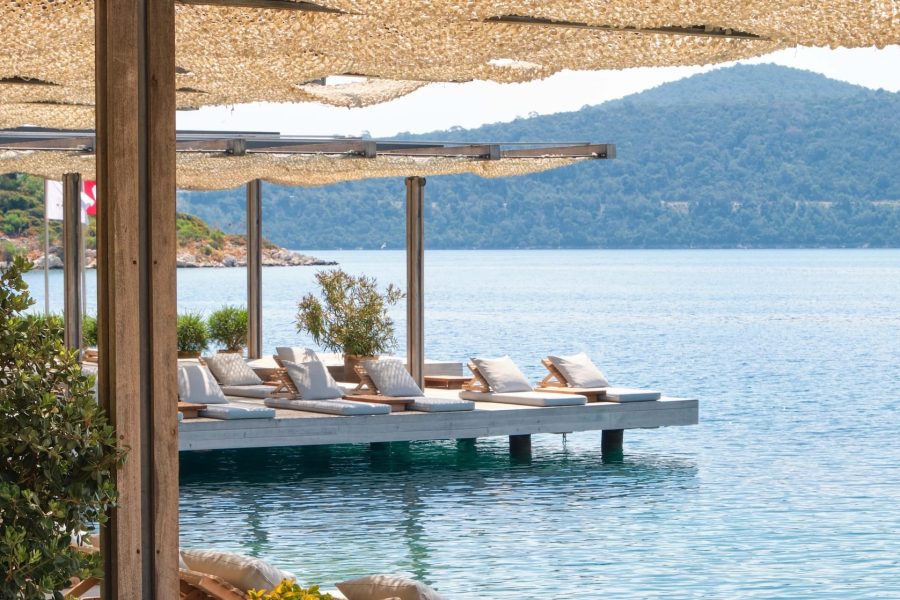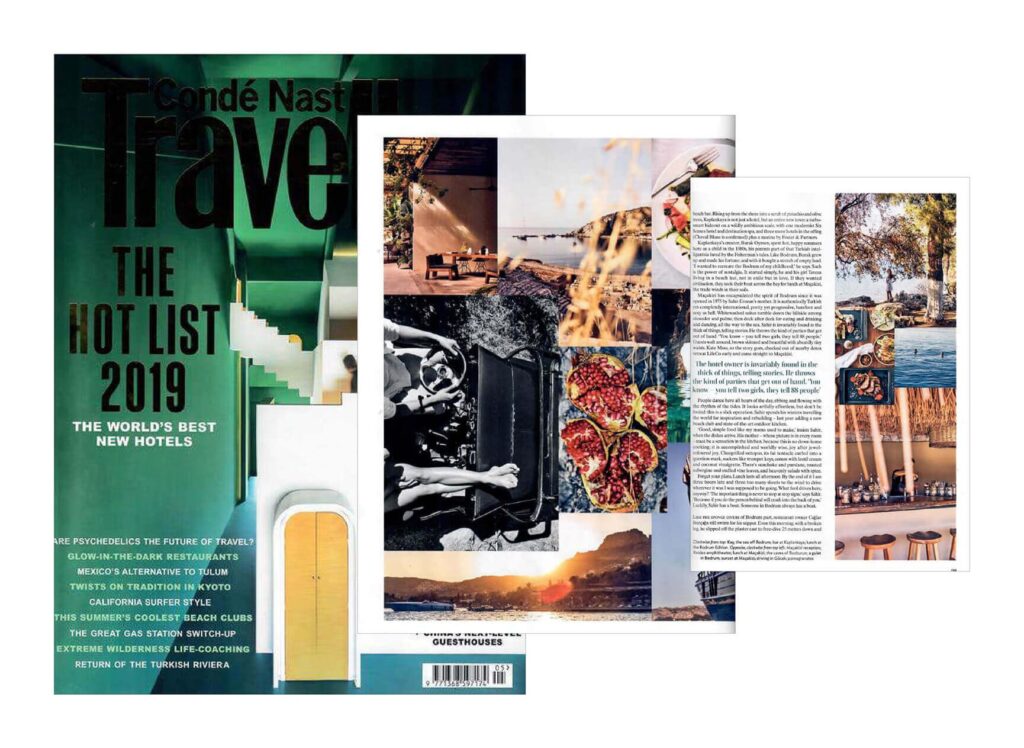The afternoon sun slants low; hazy as a dream, and paints the water gold. Out in the stillness of the hay a group of girls and boys swim, heads slick as seals, their laughter skipping over the sea hike a song. It is known as the Turquoise Coast but here, where the Aegean meets the Mediterranean, the colour of the sea is capricious as the shifting sky.
The sea informs everything in Bodrum. This place only realty makes sense from the water. Turkey’s jagged south-west does not lend itself to sweeping corniches its evergreen peninsulas stretching out into the inky waters towards the Greek islands a couple of miles away. Its seafaring people lived around its edges, in disconnected fishing villages which, even now on Bodrum’s sleepier neighbours of Bozburun and Datça, are only accessible from the sea. Well-groomed Bodrum also keeps secrets: fragments of islands too small to name, hidden coves where you drop anchor to swim in lagoons or come ashore for lunch at beach restaurants Bodrum’s stars aligned almost 100 years ago when a writer-an aristocrat from Istanbul called Cevat Sakir Kabaağaçli – was exiled here for three year, In a hut! On a beach! He fell in love, of course and stayed for three decades. The local sponge divers showed him the underwater treasures. As the Fisherman of Halicarnassus, he wrote about Homer’s land of eternal blue with its submerged cities, its imprints of Greeks and Roman, of saints and apostles, of Antony and Cleopatra. His idea of the Blue Voyage brought all Istanbul society to Bodrum, to spend summers sailing gulets along the fragrant toast.
Well-groomed Bodrum still keeps secrets: fragments of islands too small to name, hidden coves where you drop anchor to come ashore for lunch.
In the 1970s Bodrum emerged as the most glamorous spot in Turkey. And now, in pale-mineral Göltürkbükü bay, the waterside decks shine with oiled limbs lying cheek by jowl like a backgammon board. Hard to believe that a couple of years ago Europeans and Americans had all but stopped holidaying on the Turkish Riviera. It hasn’t taken long to recover. ‘People have short memories when the offering is this good,’ says Sahir Erozan, the owner of the hotel Maçakızı, surveying all the buzz and beauty with a fiendish grin.
It’s true, Bodrum is back with a bang, booming like never before, all aflutter with sleek openings which have manicured great swathes of the peninsula into next-level hotels. Old favorites have been revived; Nicolas Sarkozy was among those holing up at reopened Amanruya last summer. The newly enlarged Yalıkavak Marina is now deep and glitzy enough to accommodate superyachts with Monets and Rothkos on board.
Among the newcomers is the Bodrum Edition, importing Ian Schrager’s trademark all-white minimalism and knock-out proportions along with the star chef Diego Munoz from Peru, soft sand on the beach where children splash about on paddleboards and Balearic house music. Its bar Discetto, has a giant peek disco ball. Across the water on the mainland, an altogether more grown-up crowd drink cocktails from copper cups at Kaplankaya’s Anhinga beach bar. Rising up from the shore into a scrub of pistachio and olive trees, Kaplankaya is not just a hotel, but an entire new town: a turbo-smart hideout on a wildly ambitious scale, with one modernist Six Senses hotel and destination spa, and three more hotels in the offing (Cheval Blanc is confirmed) plus a marina by Foster & Partners. Kaplankaya’s creator, Burak Oymen, spent hot, happy summers here as a child in the 1980s, his parents part of that Turkish intelligentsia lured by the Fisherman’s tales. Like Bodrum, Burak grew up and made his fortune; and with it bought a stretch of empty land. ‘I wanted to recreate the Bodrum of my childhood,’ he says. Such is the power of nostalgia. It started simply, he and his girl Tereza living in a beach hut, not in exile but in love. If they wanted civilization, they took their boat across the bay for lunch at Maçakızı, the trade winds in their sails.
Maçakızı has encapsulated the spirit of Bodrum since it was opened in 1975 by Sahir Erozan’s mother. It is authentically Turkish yet completely international, pretty yet progressive, barefoot and sexy as hell. Whitewashed suites tumble down the hillside among oleander and palms; then deck after deck for eating and drinking and dancing, all the way to the sea. Sahir is invariably found in the thick of things telling stories. He throws the kind of parties that get out of hand. ‘You know — you tell two girls, they tell 88 people.’ Guests waft around, brown skinned and beautiful with absurdly tiny waists. Kate Moss, so the story goes, checked out of nearby detox retreat LiteCo early and came straight to Maçakızı.
The hotel owner is invariably found in the thick of things, telling stories. He throws the kind of parties that get out of hand. ‘You know – you tell two girls, they tell 88 people’
People dance here all hours of the day, ebbing and flowing with the rhythm of the tides. It looks artfully effortless, but don’t be fooled: this is a slick operation. Sahir spends his winters travelling the world for inspiration and rebuilding – last year adding a new beach club and state-of-the-art outdoor kitchen.
‘Good, simple food like my mama used to make,’ insists Sahir, when the dishes arrive. His mother -whose picture is in every room- must be a sensation in the kitchen, because this is no down-home cooking; it is accomplished and worldly wise, joy after jewel-coloured joy. Chargrilled octopus, its fat tentacle curled into a question mark, suckers like trumpet keys, comes with lentil cream and coconut vinaigrette. There’s sun choke and purslane, roasted aubergine and stuffed vine leaves, and heavenly salads with spice. Forget your plans. Lunch Lasts all afternoon. By the end of it I am three hours late and three too many sheets to the wind to drive wherever it was I was supposed to be going. What fool drives here, anyway? ‘The important thing is never to stop at stop signs,’ says Sahir. ‘Because if you do the person behind will crash into the back of you.’ Luckily, Sahir has a boat. Someone in Bodrum always has a boat.
Like the sponge divers of Bodrum past, restaurant owner Çağlar Bozçağa still swims for his supper. Even this morning, with a broken leg, he slipped off the plaster cast to free-dive 25 metres down and pluck urchins from the sea bed as though it were an underwater larder. Whatever he does not slice open and eat raw for lunch on his boat, he serves in his restaurant, Orfoz. It is found on an unlikely side street of Bodrum City, where bergamot trees planted by the Fisherman of Halicarnassus shade the whitewashed buildings, next to a statue of the cross-dressing singer Zeki Müren. Beneath the bougainvillea Çaglar is clattering around on crutches, balancing plates of meze and pouring homemade wine from bottles scribbled with ‘Chardonnay’ and ‘Shiraz’ in marker pen. It all looks unassuming, but what he serves is a bold adventure in seafood. Grouper soup is followed by morsels of house-smoked eel; oysters grilled with Parmesan; stone crab and sea snails and huge clams in their shells, sweetness in saltwater. The grand finale is testing: mantis-shrimp ceviche. Çaglar is particularly delighted by these semi-opaque götügöz (ghosts), which he gleefully calls ‘eyes on arse’. People who lustily slurp down oysters should try raw mantis-shrimp ceviche. I manage a head or an arse, I can’t tell which; then sink a glass of biodynamic white in a rush. It is made in a tiny local vineyard called Neferiye. The hand-labelled bottles may hint at moonshine, but the wine is good, clean and sweet, as Çaglar points out, ‘They’ve been malting wine in Bodrum since 2000BC.’ Homegrown and home-cooked is not a trend here, but an eternal way of life. At the peninsula’s quiet tip, Gümüşlük’s sheltered shore is lined with rustic restaurant tables set literally in the water ( in-the-know Turks head for Mimoza, the best of them), so you can cool your toes while you eat what the fishing boats hauled in that morning. Hidden in the hills above, bohemian Limon is possibly the best sunset spot anywhere, a patched-together outdoor café with bright-painted sculptures among the mismatched vintage furniture, and festoon lighting strung tree to tree, serving seasonal dishes and mama’s legendary mint lemonade. Nearby, grass-rootsy Adali Kafe opened in summer 2018: blue views on a cool hillside, where the family pour local Vin Bodrum and grow their own tomatoes. Turks, like Italians, can talk about tomatoes for hours. In Bodrum the pink ones are the sweetest; seek them out in the market, where the sellers tease with scoops of stardust, offering them up to my lips to taste and leaving the scent in my hair and on my skin. People still shop like this here. Testing the firmness of fruit and swapping cookery tips. Around the periphery, old men sit in the shade beneath strings of dried chilis, smoking like mad and drinking sweet black tea, and playing okey (rummikub with Turkish rules), the tiles rattling in their hands like pebbles in a jar.
Old and new swim together in Bodrum. As the muezzin calls at dawn, young things are swaying home, the night finally over. Out to sea, a gulet cuts across the water, its prow thrusting sharp as a sailfish. There’s a softness to the early-morning light that’s something close to nostalgia for this very moment, even as it happens. And it is easy to see how, despite all Bodrum’s newfound glossiness, you can fall in love with the simple life here. Just as long as there is good food, to eat and good wine to drink, and someone has a boat.
WHERE TO STAY
Maçakızı
One of the Mediterranean’s most blissful little seaside hotels. There are 74 fairly simple rooms (though you wouldn’t know it) among the tropical and Mediterranean greenery, bowers of bougainvillea framing sea views from every spot. It has a small but marvelous spa, a beach-rocking bar and the best restaurant in all Bodrum. In the pipeline for 2020: summer hotel residences, Maçakızı Lofts. macakizi.com. Doubles from about £450 half board.
